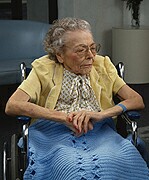
WEDNESDAY, April 11 (HealthDay News) — White women accounted for the majority of the 733,000 people in the United States who lived in state-regulated residential care facilities in 2010, according to a new federal report.
People who live in residential care facilities, also known as assisted-living communities, receive housing and supportive services because they can’t live independently but generally don’t require the level of care provided in a nursing home.
The U.S. National Center for Health Statistics (NCHS) researchers analyzed 2010 nationwide data from residential care facilities with four or more beds, and found that 91 percent of residents were white and 70 percent were female. They also found that more than half of all residents were 85 and older.
Nearly 20 percent of residents had Medicaid, which serves people who are low-income or disabled, and nearly 60 percent under age 65 were Medicaid beneficiaries, the report said.
About 40 percent of residents received assistance with three or more activities of daily living, such as help with bathing and dressing.
More than 75 percent of residents had at least two of the 10 most common health conditions, such as high blood pressure and Alzheimer’s disease, the investigators found.
The complete report, by Christine Caffrey of the NCHS division of health care statistics, and colleagues, was published in the April issue of the U.S. Centers for Disease Control and Prevention’s NCHS Data Brief.
More information
The American Geriatric Society Foundation for Health in Aging has more about assisted living.

